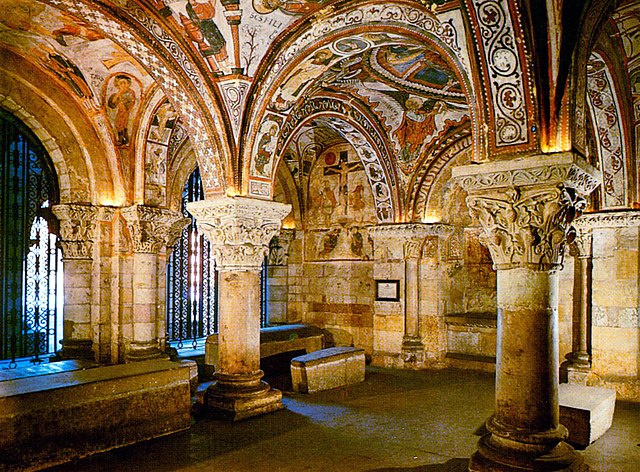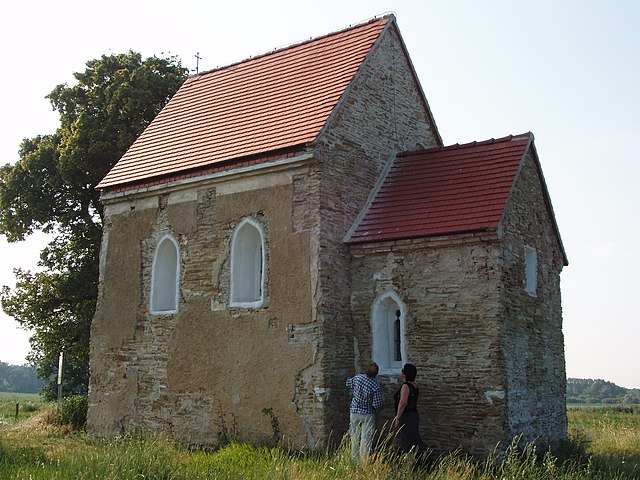Pre-Romanesque art and architecture
Pre-Romanesque art and architecture is the period in European art from either, the emergence of the Merovingian kingdom in about 500 AD or from the Carolingian Renaissance in the late 8th century, to the beginning of the 11th century Romanesque period. The term is generally used in English only for architecture and monumental sculpture, but here all the arts of the period are briefly described.
The royal palace, later church, of Santa María del Naranco, an example of Asturian architecture of the Ramirense period
The interior of the Church of São Pedro da Lourosa in Lourosa, Portugal
Church of St. Margaret of Antioch, Kopčany in Kopčany, Slovakia, 9th–10th century
Baptistery of Aix Cathedral, built by the Merovingians, AD 500
Romanesque art is the art of Europe from approximately 1000 AD to the rise of the Gothic style in the 12th century, or later depending on region. The preceding period is known as the Pre-Romanesque period. The term was invented by 19th-century art historians, especially for Romanesque architecture, which retained many basic features of Roman architectural style – most notably round-headed arches, but also barrel vaults, apses, and acanthus-leaf decoration – but had also developed many very different characteristics. In Southern France, Spain, and Italy there was an architectural continuity with the Late Antique, but the Romanesque style was the first style to spread across the whole of Catholic Europe, from Sicily to Scandinavia. Romanesque art was also greatly influenced by Byzantine art, especially in painting, and by the anti-classical energy of the decoration of the Insular art of the British Isles. From these elements was forged a highly innovative and coherent style.

The painted crypt of San Isidoro at León, Spain
The "Morgan Leaf", detached from the Winchester Bible of 1160–75. Scenes from the life of David.
Master of Pedret, The Virgin and Child in Majesty and the Adoration of the Magi, apse fresco from Tredòs, Val d'Aran, Catalonia, Spain, c. 1100, now at The Cloisters in New York City.
The Shrine of the Three Kings in Cologne Cathedral, Cologne, Germany








